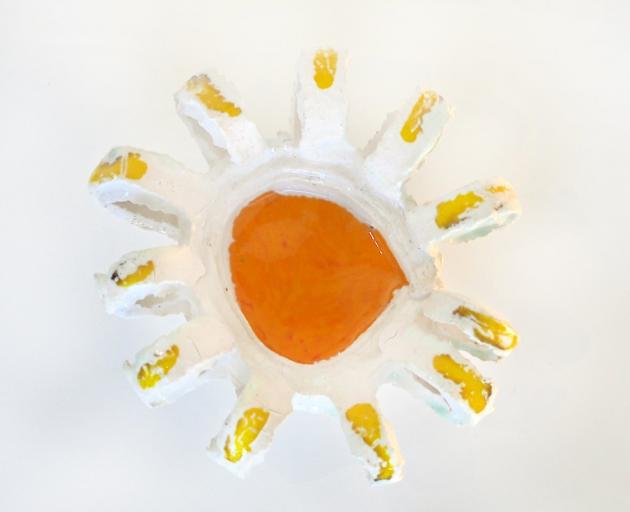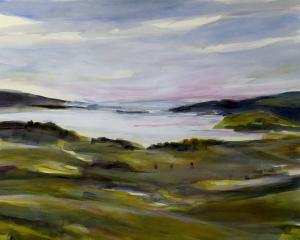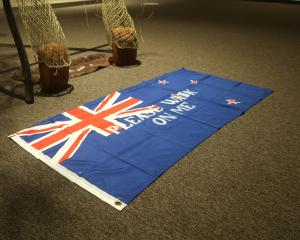‘‘A Land of Granite: McCahon and Otago’’, Colin McCahon.
(Dunedin Public Art Gallery)

McCahon was especially driven by the desire to distil landforms to their geomorphological (shape) and spatial essence. In the process of stripping the land almost down to its bones, McCahon was able to achieve a stillness and calm. Of course it is not perhaps possible to consider such an attempt to distil essence as a quiet gesture of humility. The artist’s intentions were grand, and the place McCahon still retains in the art history of Aotearoa is undisputed. It was refreshing therefore, to have an experience of calm, despite the reverence conferred on McCahon.
If the exhibition were larger, if there were more works, if the curatorial focus were less sharp, then McCahon’s ‘‘monumentality’’ may have worked against the opportunity for experiencing the contemplation this exhibition offers. This selection and arrangement manages McCahon’s hubris and enables the calm to come to the fore.
‘‘Dried Floral Arrangements: New Ceramics’’, Madeleine Child.
(RDS Gallery)

These chunky, white daisy plates with their deliciously viscous yellow and caramel centres occupy the right-hand wall of the gallery as a profusion of floral exuberance. Each daisy is animated in at least two senses by contortions of wire or deformed coat hangers that function as chains or collars for the plates. In some instances the plates become oversized pendants, in others the wire serves to quite literally push the daisy plate off the wall. In either case, this animation (suggested by the galvanic properties of wire) accentuates the sculptural properties of these earthenware works.
The exuberance of the daisies on the right-hand wall is counterbalanced by five floral arrangements in a neat line on the left. But these are not innocent; they are florid.
‘‘Rhizomes, Repetitions, Dead black deer’’, Richard Killeen.
(Brett McDowell)

His latest exhibition at Brett McDowell essentially includes two taxonomic expressions: a singular taxonomy, such as cat, ladybird, or jar, and a combined taxonomy in which different typologies are brought into unexpected relationships with each other. Just one quarter of a combined taxonomy might include a snippet from an early realist painting, an archetypal bird-like human figure, and a patterning of shoes. In these combined taxonomical works, singular typologies are merge and form new configurations. But each element has a history, an origin, or will soon itself become a prototype for the future. Killeen’s relationship to his databases of taxonomies is cyclical and citational.
Killeen will typically include an early work alongside the most recent reconfigurations of his databases, and this exhibition is no exception. The early work in this instance is Dead black deer, an acrylic on aluminium work from 1996 in 16 pieces that can be reassembled in new formations. Endlessly rhizomatic.
- Robyn Maree Pickens












